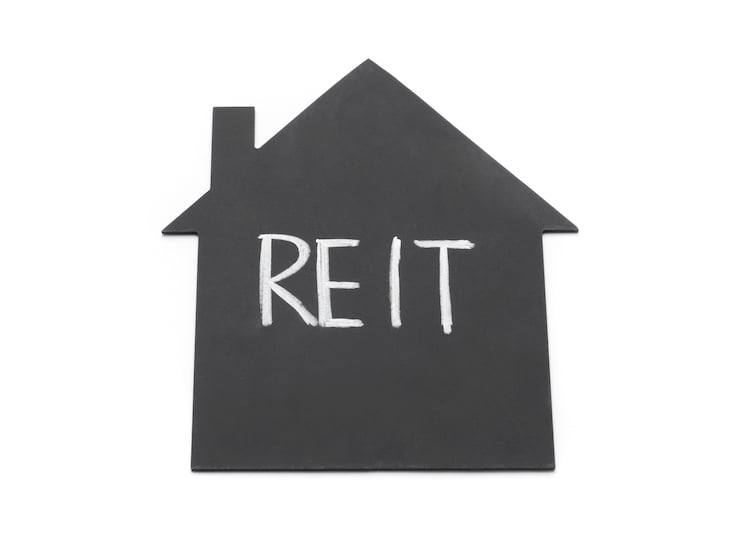Sitting on $30k in your saving’s account and wondering where to invest it?
Your first thought might be to invest it in the stock market, and for good reason. From the beginning of 2020 until October 2021 alone, the S&P 500 has increased by 33%.
However, many people today are wondering when there will be a market correction, and have begun strongly considering alternative investments like real estate. When looking at the numbers, it’s easy to understand why.
Research shows single-family rentals (SFRs) have historically offered more attractive risk-adjusted returns than the S&P 500 and bonds with less volatility. In fact, since 1971, single-family rental prices and stock prices have been almost perfectly uncorrelated, which means that SFR values are not tied to larger fluctuations in the stock market.
In this article, we’ll take a look at the most popular ways to invest in real estate today, including how to buy a single-family rental with just $30k.
Key takeaways
- Options for investing $30k in real estate include buying and renovating a home, house hacking, and investing in a single-family rental property
- Many investors are surprised to learn that $30k is more than enough for the down payment on a single-family rental home.
- Other ways to invest in real estate with $30k include fixing and flipping, real estate wholesaling, crowdfunding, and purchasing shares in a REIT.
1. Purchase a single-family rental
Many first-time real estate investors – along with people who have been in the game for a while – are surprised to learn that it’s entirely possible to purchase a single-family rental home with a down payment of $30k or less.
Lenders generally require a down payment of 25% for an investment property loan, which means the purchase price of the home can be no more than $100,000. That way, there’s money left over for closing costs and to make repairs (assuming any are needed) to get the home ready for a tenant.
While that may seem like a pretty low price, the Roofstock Marketplace has dozens of single-family rental homes listed for sale with asking prices of $100,000 or less.
Many of the homes are already rented to a tenant, which means that rental income for the new owner begins the day escrow closes. Due diligence documents such as title reports and rent ledgers have often already been gathered, allowing investors to quickly assess the potential profitability of the property.
2. BRRRR: Buy, renovate, rent, refinance, repeat
The BRRR method for investing in real estate may be perfect for people who believe there’s no reason to fix something that already works. Let’s use the $100,000 single-family rental home from above to illustrate how the BRRRR system works.
An investor puts $30k into the down payment and repairs, then rents it to a qualified tenant. Any remaining cash flow after operating expenses and the mortgage have been paid is used for additional mortgage principal payments.
Over time, equity in the home should increase due to a combination of normal price appreciation and the pay down of the mortgage. By refinancing, an investor can recover the initial $30,000 invested, then use those funds for the down payment on another single-family rental property.
Once a good home has been identified and the deal closes, the BRRR method begins all over again.
3. Wholesale distressed property
Another way to put $30k to work in real estate is by wholesaling distressed property. One of the unique things about wholesaling real estate is that an investor never takes possession of the property.
Instead, the wholesaler locates a distressed property owned by a motivated seller, puts the property under contract at a below market price, estimates the cost of any needed repairs, and assigns the purchase contract to another real estate investor in exchange for a wholesaling or assignment fee.
Investors with limited amounts of capital sometimes choose wholesaling as a real estate investing strategy, because a property can be tied up with only a small earnest money deposit.
However, wholesaling real estate is sometimes much easier said than done.
Successful wholesalers must be expert negotiators, know the local real estate market like the back of their own hand, and have access to a reliable and cost-effective network of contractors and handymen who can accurately estimate the cost of needed repairs. In many states, a real estate wholesaler must be licensed.
One of the biggest risks in wholesaling real estate is finding another investor to assign the contract to who is willing to pay the wholesaler a fee. If that doesn’t happen, the wholesaler may lose the earnest money deposit or be forced to come up with money to close on the transaction.
4. Consider house hacking
House hacking is a real estate investing technique that almost anyone with their own home can do. For example, an extra bedroom can be rented out, or the $30k can be used to convert extra space such as a basement or attic into a studio apartment.
Rental income collected from the tenant is used to help pay the mortgage and utilities for the entire home. Money that the homeowner saves is put away until there is enough to make the down payment on a rental property.
One of the great things about house hacking is that financing a primary residence is usually much more affordable than taking out an investment property loan. Down payments on owner-occupied property may be as little as 5% or less, and interest rates and lenders fees are usually lower.
Small multifamily buildings with 4 units or less may also make ideal properties to buy and house hack. The investor lives in one unit as a primary residence, rents the other units out, and uses the rental income to pay the mortgage and property operating expenses.
Self-managing the rental property is much easier when the owner lives onsite, which makes house hacking a good way to learn how to be a landlord.
5. Invest in a real estate investment trust
Real estate investment trusts – also known as REITs – are companies that own or manage real property assets. Many REITs are publicly-traded and shares can be bought and sold through online trading platforms like Fidelity, Robinhood, and TD Ameritrade.
Investing in a REIT can be a good way to diversify investments geographically and by asset class. Residential REITs specialize in single-family homes, manufactured homes, student housing, and apartment buildings.
According to Nareit, the top 20 residential REITs have generated an average dividend return of 2.39% this year, and a total YTD return of over 42%. Some of the largest residential REITs in the U.S. include American Homes 4 Rent, American Campus Communities, and AvalonBay Communities.
6. Put money into a crowdfund
Crowdfunding platforms like DiversyFund, EquityMultiple, and Fundrise allow the average person to invest in large commercial and residential real estate deals by pooling small amounts of capital with other investors.
For example, the account minimum at Fundrise is just $10 and it’s possible to use an IRA account to invest. Typical real estate crowdfunding investment opportunities may include single-family rental subdivisions, new apartment developments, stabilized industrial properties, and new commercial developments.
However, investing in a crowdfund may be more illiquid than other types of real estate investments.
Shares are often locked up for an extended period of time, and can’t be publicly traded. Also, oftentimes the best opportunities are reserved for accredited investors who have a net worth of $1 million or more, or a regular annual income of at least $200,000.
Other options for investing $30k
If none of these options for investing in real estate sound interesting, here are a few other ideas for investing $30k:
- Make private loans to other real estate investors with the idea of generating a fixed return from interest payments
- Set up an additional retirement account like a Roth IRA or a Traditional IRA and invest in individual stocks, index funds, or mutual funds.
- Pay down existing debt such as a mortgage or student loans to help improve the credit score.
- Purchase a low-interest rate CD (certificate of deposit) or 10-year Treasury bond so that the cash is there when needed.
Final thoughts
Using $30k to invest in real estate may be a good first step toward generating monthly rental income and building equity over the long term. However, before spending any amount of money, investors should take the time to understand the potential pros and cons of each investment option. Even though $30k may not seem like a large amount of money, it can go a long way when investing in the right real estate opportunities.










